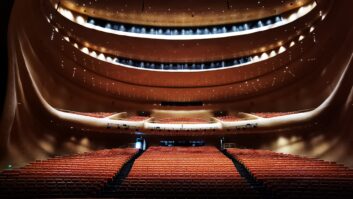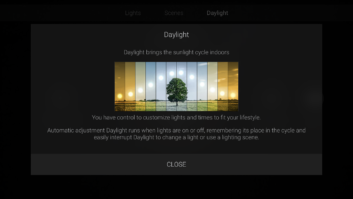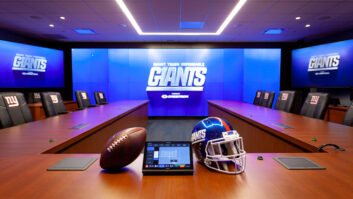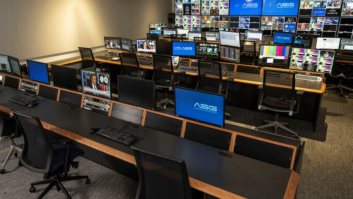
Underlined by a recent article by Billboard (February 14, 2020), the last two years have played host to a remarkable increase in the number of concert venues being constructed or substantially refurbished. The size and scale of these projects can vary dramatically – from sub-500 seaters right up to 20,000+ capacity venues – but in terms of the refurbishments, they often have a couple of motivating factors in common.
First of all, there is a growing desire – especially at the larger sites – to harness the commercial opportunities offered by restaurants, bars and other non-musical services; see, for example, the interconnecting F&B mini-village recently created during an overhaul of Atlanta’s State Farm Arena.
Secondly, there is a general desire to underpin the appeal of the venue by increasing the quality of the infrastructure and its core facilities – a trend that can be seen in concert halls ranging from the Aberdeen Music Hall, with its recently restored auditorium, to Denver’s Belico Theatre, which has now been equipped with an updated mix platform and all new acoustic treatments.
For touring productions – especially those out on long arena treks – this makes it easier to go into a venue without bringing in significant quantities of their own equipment; it’s often the case now that the permanent PA is entirely fit for purpose. This helps to reduce the load whilst out on the road – something that has been in the spotlight a great deal recently with several major acts taking steps to reduce the carbon footprint of their touring activities.
Finally, there is an impetus to boost the flexibility of concert venues to handle a wider variety of musical and non-musical events – witness the slew of renovations at New Jersey’s BB&T Pavilion to enhance its staging of both indoor and outdoor events, among numerous other examples.
Updating the permanent audio system and (in many cases) the network infrastructure has been an element of many recent projects. Lee Dennison is head of development at technical solutions specialist White Light, for whom concert venues have long been a core market. He confirms that 2019 was “a very strong year” for projects in this space, “with a lot of venues looking at what they have got and thinking carefully about how they can improve the entire visitor experience. In fact, until a few weeks ago we were operating at something like three or four times over budget forecasts.”
You may also be interested in:
Of course, that was before Covid-19 officially became a global pandemic and huge swathes of the world were put under lockdown conditions, raising challenging for many new developments or refurbishments – more of which anon.
‘Tour grade’ systems
Marc Kocks is business development manager for fixed install market EMEA at Italian professional amplifier manufacturer Powersoft. Last year proved to be “a very good one for projects in concert venues,” he confirms, “with a high number of installations for our T Series as well as the X Series.”
Along with a general drive to improve audio quality, Kocks indicates that the recent upturn in concert venue projects is driven in large part by a desire to make facilities more attractive and cost-efficient to touring productions: “In the past, bands often had to bring in significant amounts of their own equipment, but more recently the availability and affordability of digital mixing consoles, line arrays and power amplifiers has enabled venues to upgrade, meaning that the promoters and management of bands can reduce their touring costs. By removing the need to bring in some types of equipment, touring productions may also be able to invest more in specific aspects of the production.”
Reducing the freighting requirements also chimes with the recent emphasis on the sustainability of global touring. Massive Attack and Coldplay are among the major acts to have called for a reduction in tours’ ecological impact.
Simultaneously, the intensification of touring schedules in recent years – with a tendency towards more shows taking place in more compressed time-frames – means that “being able to come into a venue and soundcheck quickly using [the permanent system] is beneficial for sound crews”, says Kocks.
David Dohrmann, director of application install EMEA at L-Acoustics, remarks that “we are seeing a continuation of the trend for live music venues and performing arts centres to install touring-grade sound systems. There’s a two-fold advantage to these installations. Firstly, the venue can attract a high-calibre of performer; secondly, the venue allows those performers to save time and money by not having to carry their own system into the venue. Either they can tour with just a control package, choosing to perform only in venues with rider-friendly systems, or they can leave the trucks aside for a night and forgo the load-in and load-out labour. Both ways, the tour wins. We actually just installed an L-Acoustics sound system in Rishon LeZion hall in Israel, and a main argument for choosing the system was to have a positive impact on the environment, keeping those trucks silent for a few nights.”
Tim Horton is sales and installation manager at SFL, an AV supplier and installer active in the UK and internationally. “Many venues are now looking to the future, particularly to eco-friendly system design,” he says. “In terms of audio systems, [this translates to] more efficient loudspeaker development which requires less amplifier power to achieve the same (or more) SPL capabilities.”
Venues are also benefiting from further progress in audio directivity control. Dohrmann points to the inclusion in L-Acoustics Kara II and A Series line source systems of the company’s “Panflex technology, allowing them to offer four-in-one directivity: 70° or 110° symmetrical or 90° asymmetrical, left or right. Combined with our Autosplay feature in Soundvision [modelling software], which uses algorithms to calculate mechanical optimisation based on the proposed configuration and design objectives defined by the systems engineer, you’ve got everything you need to simplify the work of AV designers, ensure consistent results in early project stages, and create a sound design that can fit any venue audience geometry.”
SFL has also observed the increasing importance of venue flexibility. For instance, says Horton, “when we partnered with the Royal Albert Hall on their recent audio system upgrade, one of their criteria was having a rider-friendly system that met the needs of their visiting productions. This has the effect of reducing the number of occasions when large-scale trucking is required to bring in a speaker system appropriate for that production.”
There is also a trend of venues “wanting to install large-scale speaker systems that also double up as PA-VA systems,” adds Horton. “The manufacturers are embracing this too and including fall-back redundancy features to seamlessly switch from the main feed to a voice-evac announcement. Similarly, the remote fault monitoring of these systems is critical in these PA-VA scenarios. We are seeing this in stadia where the venues are diversifying from just being used for sporting events to also hosting more live music events.”
Dohrmann also alludes to an increased interest in combined PA-VA capabilities, noting that L-Acoustics “recently put some effort into integrating PA-VA features and concert PA systems by offering a more seamless interoperability with PA-VA control systems such as [QSC’s] Q-SYS, Crestron and Extron. This allows the venue staff to operate everything in a more straightforward and safer manner overall.”
Combined systems may not be the way to go for all projects, though. Dohrmann notes: “Depending on the use case, PA-VA might still be a separate system due to different regulations for evacuation systems, but in some cases we are able to offer a better value in that domain by offering the extended quality and coverage of concert grade systems for evacuation purposes.”
Of projects and pandemics
The extent to which audio upgrades have been postponed or halted due to Covid-19 varies due to geography, lockdown conditions, and the decisions of the venue owners and operators. In the case of White Light, says Dennison, “there are some venues where we can get on-site to work, while remaining entirely compliant with the government’s health and safety guidelines; there are others where there is no access at the moment; and there are some that have been postponed.”
In theory, suggests Horton, this should be an ideal time “for venues to be taking stock of their systems and planning their next steps and upgrades”. The extent to which this is possible depends on the financial situation of the individual venue – hence, “for some, whilst there might be a desire, there is no capital (or assurance of future financial security) so talk of upgrades might be entirely inappropriate. For others, a closed venue could be the prime window in which to bring in contractors to undertake essential repairs and upgrades”.
For installers like SFL, the challenge is “where we can appropriately carry out any on-site work, the safety of our team cannot be compromised. Equally, getting goods from some suppliers is not always possible – many are operating a skeleton staff, while some don’t have the stock in the UK to be able to ship and can’t get it from abroad either”.
Dohrmann highlights a probable divide between public and privately operated venues in terms of how much work takes place over the next few months: “Privately owned venues will be examining their investments with an eye to lack of income and the inability to predict when that income will begin to come back. We do see some cases with public venues where the lockdown time is being used to get long-planned upgrades implemented earlier, as and when local government directives allow that work to continue. In these instances, access to the venue without having to work around showtimes allows for installation work to move forward, even if it is at a slower pace.”
At the time of writing, the number of Covid-19 infections and fatalities appeared to be on the decline in parts of Asia – possibly offering a glimpse of how the industry might begin to recover elsewhere. Kocks remarks: “We are already starting to see an increase in enquiries from that region, and hopefully that might start to happen in Europe soon.”
In the meantime, Powersoft – like many manufacturers – has ramped up its online training and consultation activities: “It’s great to be able to keep in contact with our customers, and the programme we have put together has been very popular – we’ve been communicating with around 600 customers each week.”
In terms of the sector as a whole, the duration of the crisis will determine the extent of the impact, but whatever the timescale, no one expects a swift return to previous activity levels. “The tap won’t suddenly turn back on,” observes Dennison. “It will take a while for the global industry to pick up, and that has implications for [new projects]. So as much as everyone will want to get back to normal, there will be a need for patience.”
Best case scenario
After the present hiatus, the best case scenario is that people will want to end their live music drought and be enthusiastic to return to concert venues. A less positive scenario is that the legacy of social distancing might last many months, and that promoters delay planned touring activity until into 2021 or beyond. What seems certain is that there will be a global recession of some degree that impinges upon levels of disposable income. Ultimately, the sector will recover and there will be renewed work in concert venues to ensure they continue to offer the highest possible audio quality.
Deep connection with the performing arts is “part of being human for most of us – that cannot be taken away”, says Dennison. “So whilst it may be some time before the business is restored to pre-crisis levels, the industry will regain its health over time.”







